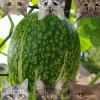Key Takeaways
- Antirrhinum, commonly known as snapdragons, are non-toxic to both dogs and cats.
- Snapdragons are the same as Antirrhinum; they are often referred to interchangeably.
- According to the ASPCA, snapdragons are safe for pets, making them a great choice for pet-friendly gardens.
- Snapdragons thrive best in sunny locations with well-drained soil.
- They are perennials in warm climates but are often grown as annuals in cooler areas.
Explore Safe Plant Choices for Pets
When it comes to selecting plants for a garden that pets frequent, safety is the top priority. Many plants are beautiful but can be harmful or even toxic to our furry friends. Thankfully, the ASPCA provides a comprehensive list of non-toxic plants that are safe for dogs and cats, and snapdragons (Antirrhinum) are proudly on that list.
Pet owners often worry about what their pets might chew on or ingest. Therefore, it’s crucial to choose plants that won’t harm them. Snapdragons are a fantastic option because they not only bring vibrant colors to your garden but also pose no threat to your beloved animals.
- Check the ASPCA’s list for safe plant options.
- Always monitor your pets around new plants.
- Consider pet-safe fertilizers and pest control solutions.
Understanding ASPCA’s Non-Toxic Plant List
The ASPCA’s list of non-toxic plants is a valuable resource for pet owners who want to ensure their garden is safe. This list includes a variety of plants that are not harmful to dogs, cats, or other common pets. Snapdragons are featured on this list, confirming their status as a pet-friendly plant.
“Kings Seeds Antirrhinum Snap Happy …” from birchgrovegc.co.uk and used with no modifications.
Identifying Antirrhinum and Its Safety for Pets
Antirrhinum, more commonly known as snapdragons, are a genus of plants characterized by their colorful, dragon-like flowers. These plants are not only visually appealing but also safe for pets, making them a popular choice among gardeners who are also pet owners.
Snapdragons are non-toxic, meaning that if your pet decides to take a nibble, they won’t suffer from any harmful effects. However, it’s always wise to discourage pets from eating plants, as any plant material can cause mild digestive upset in large quantities.
Snapdragons vs Antirrhinum: Same or Different
Many people wonder if snapdragons and Antirrhinum are the same. The answer is yes; they are two names for the same plant. “Snapdragon” is the common name, while “Antirrhinum” is the botanical name. Both refer to the same vibrant, pet-safe plant that many gardeners love.
Discovering the Correct Placement for Snapdragons
Snapdragons thrive in sunny locations with well-drained soil. When planning your garden, consider areas that receive ample sunlight throughout the day. This will help your snapdragons grow strong and vibrant.
In terms of soil, snapdragons prefer well-drained conditions. If your garden soil retains too much moisture, consider adding sand or compost to improve drainage. This simple adjustment can make a significant difference in the health of your snapdragons.
Antirrhinum majus: The Botanical Perspective
Antirrhinum majus, commonly known as snapdragons, are popular garden plants renowned for their bright, colorful blooms and unique flower shape that resembles a dragon’s mouth. These flowers can be found in a spectrum of colors, including pink, red, yellow, and white. Native to the Mediterranean region, snapdragons have become a favorite in gardens worldwide due to their striking appearance and ease of cultivation.
Botanically, Antirrhinum belongs to the Plantaginaceae family. They are herbaceous plants, meaning they have non-woody stems. In warm climates, snapdragons can act as perennials, returning year after year. However, in colder climates, they are often grown as annuals. Their versatility and non-toxic nature make them an excellent choice for pet-friendly gardens.
Potential Effects of Antirrhinum on Cats and Dogs
While Antirrhinum is non-toxic to pets, it’s important to remember that any plant material can cause mild digestive upset if consumed in large amounts. This is true even for non-toxic plants. Therefore, it’s always best to monitor your pets and discourage them from eating plants. For more information on pet safety, explore the new federal rules on emotional support animals.
- Keep an eye on your pets in the garden.
- Train pets to avoid chewing on plants.
- Provide plenty of safe chew toys as alternatives.
Most importantly, if you notice any unusual behavior or symptoms in your pets after they’ve been in the garden, consult your veterinarian. Common signs of digestive upset include vomiting and diarrhea, but these symptoms are usually mild and resolve quickly. For more on helping your pets adapt to new environments, check out this guide on pet socialization.
By choosing non-toxic plants like snapdragons, you reduce the risk of your pets experiencing severe reactions, providing peace of mind for you and a safer environment for them.
Examining the Safety of Snapdragons for Pets
Snapdragons have been deemed safe by the ASPCA, making them a wonderful choice for pet-friendly gardens. Their non-toxic nature means that if your dog or cat decides to nibble on a flower or two, there’s no need for panic.
Besides being safe, snapdragons are also incredibly easy to grow, which adds to their appeal. They require minimal maintenance and can thrive in various soil types, provided they have good drainage. This makes them ideal for both novice and experienced gardeners alike.
Planting Strategies for Optimal Safety and Growth
To ensure your snapdragons flourish, it’s essential to plant them in the right conditions. Consider the amount of sunlight your garden receives, as snapdragons prefer full sun to partial shade. This exposure will help them produce vibrant blooms and maintain healthy growth.
When planting snapdragons, space them appropriately to allow for air circulation, which helps prevent diseases. It’s also a good idea to mulch around the base of the plants to retain moisture and suppress weeds.
Water snapdragons regularly, but be careful not to overwater. They prefer the soil to dry out slightly between waterings. This balance will help prevent root rot and other moisture-related issues.
Choosing the Right Location in Your Garden
Choosing the right location for your snapdragons is crucial for their success. Ideally, select a spot that receives at least six hours of sunlight per day. If you live in a region with intense heat, some afternoon shade can help protect the plants from scorching.
Example: “In my own garden, I planted snapdragons along the south-facing fence where they receive morning sun and afternoon shade. This placement has resulted in lush, colorful blooms that attract pollinators and brighten up the space.”
Soil preparation is also key. Amend the soil with compost or organic matter to enhance drainage and provide nutrients. By taking these steps, you’ll create an optimal environment for your snapdragons to thrive.
Perennial Growth Patterns and Their Benefits
In warmer climates, snapdragons can grow as perennials, meaning they will return year after year. This perennial nature offers several benefits, such as reduced planting costs and less annual maintenance. Once established, perennial snapdragons require minimal care, making them a convenient choice for busy gardeners. Additionally, the social benefits of gardening can be a rewarding experience for many, providing both beauty and a sense of accomplishment.
Additionally, perennials often develop stronger root systems, which can help them withstand drought conditions better than annuals. This resilience ensures that your garden remains colorful and vibrant, even during challenging weather conditions. For more on how to create a pet-friendly garden, consider exploring the benefits of pet ownership.
Final Thoughts on Safe Gardening for Pet Owners
Creating a garden that is both beautiful and safe for pets is entirely possible with a little planning and knowledge. Snapdragons, or Antirrhinum, are a perfect choice for pet owners who want to enjoy vibrant blooms without worrying about toxicity. By understanding the needs of these plants and the potential effects on pets, you can cultivate a garden that is both aesthetically pleasing and secure for your furry friends.
Pet-Friendly Partners for Common Snapdragons (that grow well with antirrhinum)
When planning your garden, consider pairing snapdragons with other non-toxic plants to create a diverse and colorful landscape. Some great pet-friendly companions include clarkia, marigolds, sunflowers, and petunias. These plants not only complement the vibrant colors of snapdragons but also share similar growing conditions, making them easy to manage together.
Long-Term Benefits of a Pet Safe, Flourishing Garden
A pet-safe garden offers peace of mind and enhances the quality of life for both you and your pets. By choosing non-toxic plants like snapdragons, you reduce the risk of accidental poisoning and create a safe environment for your pets to explore. Additionally, a well-maintained garden provides a natural habitat for pollinators, contributing to a healthier ecosystem overall. Learn more about the social benefits of pet ownership for you and your furry friends.
Frequently Asked Questions (FAQ)
Gardening with pets in mind often raises questions about plant safety and care. Here are some common inquiries regarding snapdragons and their place in pet-friendly gardens.
Are snapdragons really safe for dogs and cats?
Yes, snapdragons are non-toxic to both dogs and cats. This makes them an excellent choice for gardens frequented by pets. While they are safe, it’s still important to discourage pets from eating any plants, as large amounts can cause mild digestive upset.
Can I grow snapdragons indoors and outdoors? Do snapdragons grow well in containers?
- Snapdragons can be grown both indoors and outdoors, provided they receive adequate sunlight.
- They thrive in containers, making them versatile for different gardening spaces.
- Ensure containers have good drainage to prevent waterlogging.
- Use a high-quality potting mix to support healthy growth.
By growing snapdragons in containers, you can easily move them to optimal locations as the seasons change, ensuring they receive the best conditions for blooming.
Snapdragons are a delightful addition to any garden, offering both beauty and safety for pets. By incorporating these vibrant plants into your garden, you can enjoy a colorful landscape that welcomes your furry friends. Remember to choose companion plants wisely and provide the right care for a thriving, pet-friendly garden.
The ASPCA provides a comprehensive list of non-toxic plants for pets, helping pet owners ensure their furry friends are safe. Among these plants, antirrhinum, commonly known as snapdragons, are often questioned for their safety around pets. Fortunately, snapdragons are not poisonous to dogs and cats, making them a safe choice for pet-friendly gardens. When considering where to plant these vibrant flowers, it’s important to remember that they are perennials, which means they will return year after year. For pet owners concerned about the legal aspects of pet care, understanding the benefits of pets as assets in a trust can provide peace of mind.






